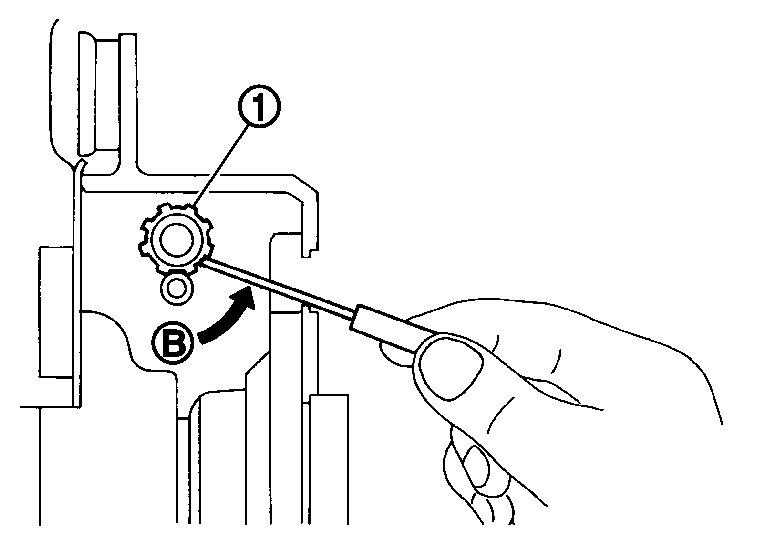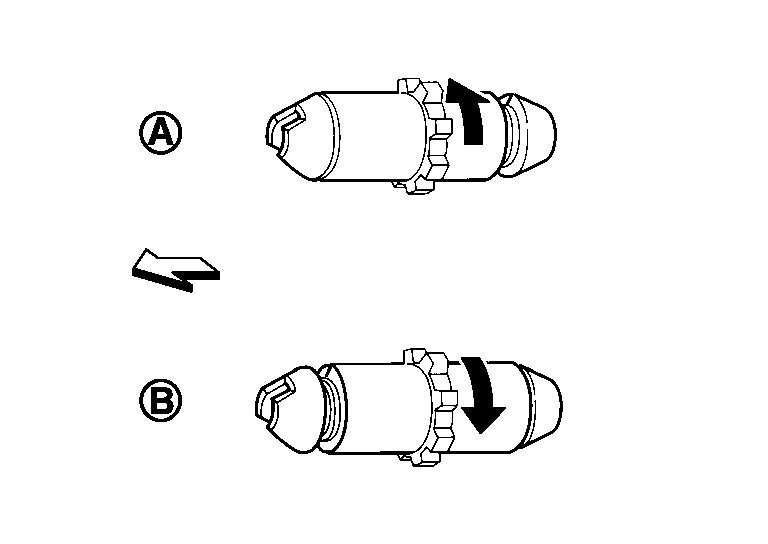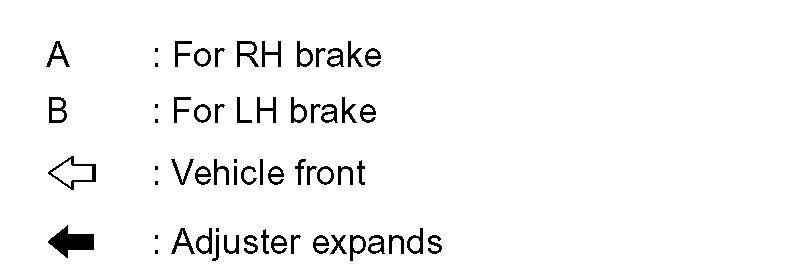Welcome back:
Just FYI. The rear brake rotors are a bit more difficult to remove because behind the rotor's hat are the parking brake shoes. You will most likely need to adjust them down to remove the rotor.
Here are the directions for removal and replacement of the parking brake shoes. I'm adding them because the directions show how to make the needed adjustments both to remove them and then to readjust them after the new rotor is installed.
_________________________________________________-
PARKING BRAKE SHOE
Removal and Installation
REMOVAL
WARNING:
Clean any dust from the parking brake shoes and back plates with a vacuum dust collector. Never blow with compressed air.
1. Remove rear tires with power tool.
2. Remove disc rotor. See: Brake Caliper > Removal and Replacement > Removal And Installation.
CAUTION:
Parking brake completely in the released position.
3. If disc rotor cannot be removed, remove as follows:
a. Fix the disc rotor with wheel nuts and remove the adjusting hole plug.
Pic 1
b. Using suitable tool, rotate adjuster (1) in direction (B) to retract and loosen parking brake shoe.
4. Remove anti-rattle pins, retainers, anti-rattle spring, adjuster spring and return springs.
CAUTION:
Never drop the removed parts.
5. Remove parking brake shoes, adjuster assembly and toggle lever.
CAUTION:
- The parking brake shoes for the front side are made of different materials from those for the rear side. Never misidentify them when removing.
- Never drop the removed parts.
INSTALLATION
Install in the reverse order of removal.
- Apply PBC (Poly Butyl Cuprysil) grease or silicone-based grease to the back plate and brake shoe.
CAUTION:
The parking brake shoes for the front side are made of different materials from those for the rear side. Never misidentify them when removing and replacing.
Pic 2
pic 3
- Assemble adjusters so that threaded part is expanded when rotating it in the direction shown by arrow.
- Shorten adjuster by rotating it.
- When disassembling, apply PBC (Poly Butyl Cuprysil) grease or silicone-based grease to threads.
- Check parking brake shoe sliding surface and drum inner surface for grease. Wipe it off if it adhere on the surfaces.
______________________________________
I hope this helps. Take care and I will watch for the results.
Joe
Images (Click to make bigger)
Monday, October 7th, 2019 AT 9:05 PM





